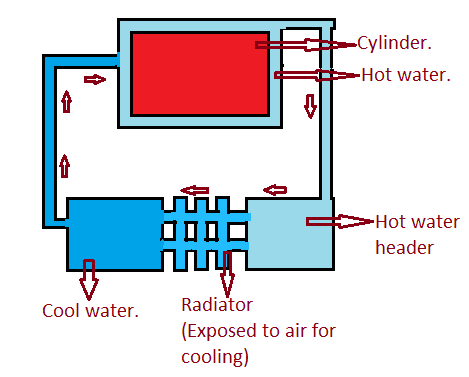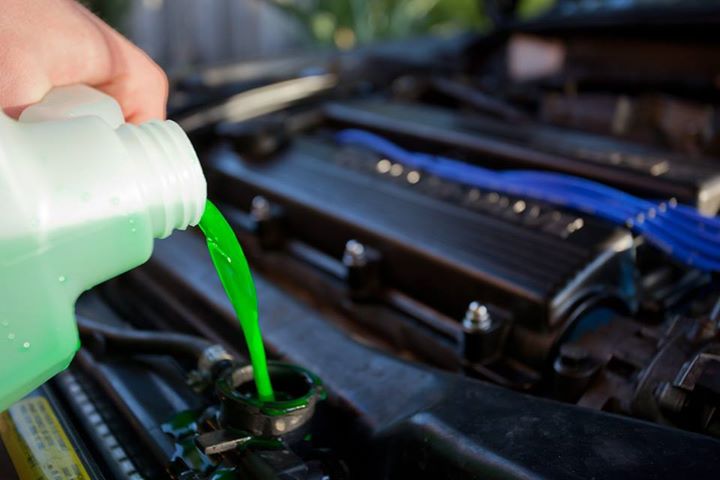What is Car suspension?
Car suspension is the system of tires, tire air, springs, shock absorbers and linkages that connects a vehicle to its wheels and allows relative motion between the two. Car suspensions must support both road holding/handling and ride quality, which are two conflicting objectives. Car suspensions enhance vehicle stability by absorbing impacts from bumps in the road or changes in terrain allowing for a smoother and more comfortable ride.
Parts of Car Suspension?
The key components in car suspension systems are as follows
1.Springs
2.Linkages
3.Dameprs
4.Anti-roll bars
5.Wheels
6.Shock Absorbers
7.Rods
8.Joints, Bearings, & Bushings
9.Steering System
10.Frame
1. Springs
Most people don’t think about their car’s springs very often – but they should! These metal coils play an important role in making sure you and your passengers have a smooth ride, no matter what kind of surface you’re driving on. Here’s everything you need to know about these essential components of your vehicle.
2. Steering Linkages
The steering linkage is a component of the steering system that helps transfer motion from the steering wheel to the wheels on the vehicle and helps to turn them in the right direction at the correct speed. It is also integrated with the front suspension, steer axle, and wheel/tire components.
3. Dampers
Dampers are an essential component of any suspension system. By definition, a damper is a device that absorbs and dissipates shock. Dampers are also sometimes referred to as shock absorbers. The primary function of a damper is to smooth out the ride over bumpy roads. It does this by absorbing the kinetic energy of the suspension as it travels up and down.
4. Anti-roll bars
An anti-roll bar works by connecting opposite (left/right) wheels together through short lever arms linked by a torsion spring. A torsion spring is a type of spring that produces torque when twisted. When this happens, the torsion spring causes tension between the wheels which creates resistance to body roll when cornering or traveling over bumps and dips in the road. As you might expect, this makes your vehicle more stable and comfortable to drive in almost any situation
5. Wheels
Wheels and tires are the most visible part of a suspension system but they also play an essential role in providing a comfortable ride. The wheel is connected to a suspension component such as a shock absorber or spring while the tire provides traction on various types of terrain. Without a wheel or tire, it would be impossible to keep the vehicle moving forward, let alone have any grip on slippery surfaces.
6. Shock Absorbers
Every vehicle on the road has shock absorbers. But what exactly do they do, and why are they so important? Shock absorbers work with the springs to absorb the shock of driving on the road. Without these essential components, both the vehicle and passengers would be bouncing up and down each time you drive over rough terrain. Let’s take a look at how shock absorbers work and why they are so important.
7. Rods
Rods are metal links that connect the various parts of your car’s suspension system together. This means that they’re responsible for the safety of your vehicle, as well as its performance, and should last for the lifetime of the car. Unfortunately, rods can be damaged in a vehicle accident and may need to be replaced. Let’s go into detail about what rods are and how they affect your vehicle.
8. Joints, Bearings, & Bushings
Joints are mechanical devices that allow two or more objects to be connected in order to move relative to each other. In the case of a suspension system, joints are used to connect rods to other components such as arms or springs. This allows for sideways motion while maintaining stability. Joints also allow for some degree of twisting motion which is necessary for proper operation of the suspension system.
Bearings Bearings are mechanical devices designed to support and reduce friction between two moving parts. In a suspension system, bearings can be used in conjunction with joints to reduce friction and allow for smooth movement. They provide support for the weight of other components as well as help maintain alignment between moving parts.
Bushings Bushings are cylindrical pieces made from rubber or metal that fit between two parts in order to reduce friction and absorb vibrations. They also act as pivots when there is lateral movement involved such as when turning corners or traveling over bumps in the road. Bushings do not allow for twisting motions but instead keep everything aligned properly by cushioning impacts from outside forces like potholes or curbs.
9. Steering System
Understanding how the steering and suspension systems work together is essential for any driver. While the steering system is not a direct component of the suspension system, it is affected whenever any part of the suspension fails. Together, the steering system and suspension are what make the wheels and tires turn and drive.
10. Frame
The frame’s main role is to provide structural support for the suspension system and to hold all its components together. It also helps with shock absorption by allowing some movement between components when there are bumps or dips in the road. This helps reduce wear on other parts of the system and keeps your car comfortable while driving. The frame also helps maintain proper alignment between wheels, axles, and tires – ensuring that your car tracks straight on even roads and curves properly on winding roads.
Everything You Need to Know About the Car Suspension System and Its Functions:
When it comes to your car, you want to make sure that it is running in top condition. This includes having a functioning suspension system. The suspension system of a car serves many different functions, such as maintaining the ride height, reducing shock forces, and keeping the tires in contact with the road. In this blog post, we will explore all of these functions in more detail and discuss why it is important to have a good suspension system for your car.
The suspension system of a car has many functions. It not only makes the ride smoother, but also improves the handling and control of the vehicle. It is important to maintain correct ride height, wheel alignment, and direction of travel. A good suspension system will also support the weight of the vehicle and keep the tires in contact with the road. In this blog post, we will explore the different functions of a car suspension system in more detail.
The car suspension system performs the below functions
1. Maintain correct vehicle ride height
2. Reduce the effect of shock forces
3. Maintain proper wheel alignment
4. Support vehicle weight
5. Keep the tyres in contact with the road
6. Control Direction of the vehicle
1. Maintain Correct Ride Height:
The suspension system helps to maintain the correct ride height of the vehicle. This is important for a number of reasons. First, it helps to improve the aerodynamics of the vehicle. Second, it helps to reduce fuel consumption. Third, it helps to improve the handling and control of the vehicle. fourth, it helps to reduce wear and tear on the tires.
2. Reduce Effect of Shock Forces:
The suspension system helps to reduce the effect of shock forces on the vehicle. Shock forces can cause the vehicle to lose control and cause accidents. By reducing these forces, the suspension system helps to improve safety on the road.
3. Maintain proper Wheel Alignment:
The suspension system helps to maintain correct wheel alignment. This is important because it helps to improve fuel economy and tire life. It also helps to improve the handling and control of the vehicle.
4. Support Vehicle Weight:
The suspension system helps to support the weight of the vehicle. This is important because it helps to improve fuel economy and tire life. It also helps to improve safety on the road by reducing wear and tear on the tires.
5. Keep Tires in Contact with Road:
The suspension system helps to keep the tires in contact with the road. This is important because it helps to improve traction and braking ability. It also helps to reduce wear and tear on the tires.
6. Control Direction of the vehicle:
The suspension system helps to control the direction of travel of the vehicle. This is important because it helps to reduce accidents by keeping the vehicle stable in a straight line.
The car suspension system has many functions that are essential for a safe and comfortable ride. It is important to maintain correct ride height, wheel alignment, and direction of travel. A good suspension system will also support the weight of your vehicle and keep your tires in contact with ground throughout your journey ensuring better traction & braking ability while reducing wear & tear on your tires significantly!
Understanding Suspension System Classifications/Types
A car’s suspension system is composed of many components, working together to keep the wheels in contact with the ground. The most common elements are springs, links/arms and shock absorbers. However, there is more than one type of suspension system available. Knowing what types are out there can help you understand your car and make informed decisions when selecting a vehicle or installing an aftermarket suspension.
Basically, Suspension Systems are classified into 2 types
1. Dependent Suspension System
2. Independent Suspension System
1. Dependent Suspension System
A dependent suspension system connotes that there is a beam or axle that connects the left wheel to the right so they work in tandem with each other. This type of setup is typically used in vehicles where cost-cutting is necessary – such as mass-market cars or light trucks – as it is both rugged and cheap. Dependent suspensions can be sprung by either a combination of leaf springs and shock absorbers or coil springs and shock absorbers, depending on the construction of the vehicle.
2. Independent Suspension System
An independent suspension system, sometimes referred to as an IRS (independent rear suspension) setup, offers better handling characteristics than its dependent counterpart due to its ability to reduce body roll during cornering maneuvers. Independent suspensions are typically found in luxury and performance vehicles because they require more engineering knowledge and materials to design compared to dependent systems. These setups could consist of multi-links, struts, air bags or torsion bars all combined together with shocks for dampening purposes.
Conclusion:
Car Suspension systems come in various shapes and sizes but generally fall under two classifications; dependent or independent setups. A dependent suspension system uses a beam or axle connecting both wheels while an independent setup allows each wheel to move independently from one another. While dependent suspensions are cheaper and simpler, independent setups provide better handling capabilities which makes them ideal for luxury cars and performance vehicles alike. So if you’re looking for improved ride quality or sporty driving dynamics, then an independent suspension system may be just what you need!


